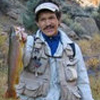Much has been spoken, written, and most of all debated, about the lethal use of so-called drone aircraft by the United States in overseas countries. The pushback against drone strikes on presumed enemies of the United States is to be encouraged considering the inherent legal, moral, and even strategic questions involved in remote-controlled killing within nation states not officially at war with this country.
Meanwhile, a stateside donnybrook of epic proportions is shaping up over the use of drones — also known as Unmanned Aircraft Systems (UAS), Unmanned Aerial Vehicles (UAV), and Remotely Piloted Aircraft (RPA) — within U.S. borders. At issue are questions concerning air traffic safety, constitutional privacy rights, the alleged militarization of police work, and domestic spying on peaceful citizens by government agencies. Other issues are sure to develop as these soulless flying machines — predicted at 30,000 inside of 20 years by the Federal Aviation Administration — become embedded in our society, sharing air space with other traffic.
This is more than a hypothetical situation. Among the mandates included in the Federal Aviation Administration Modernization and Reform Act passed by Congress and signed by President Obama last year are those instructing the FAA to “establish a program to integrate unmanned aircraft systems into the national airspace system (NAS)” and “to establish six test ranges” as part of the effort.
Also, according to a February 2012 Washington Times story, “the FAA has issued hundreds of certificates to police and other government agencies, and a handful to research institutions to allow them to fly drones of various kinds over the United States for particular missions.”
In New Mexico, the certificate holders include New Mexico State University and New Mexico Tech. Also included are local police forces, such as those of Arlington Texas, North Little Rock, Ark., and Ogden, Utah. In the summer of 2011, police in North Dakota called in a drone aircraft intended for use along the U.S.- Canada border to surveil and apprehend three criminal suspects.
According to the Center for Responsive Politics, “many potential uses for unmanned aircraft . . . have been identified,” such as “monitoring pipelines and power lines, finding lost hikers, surveying crops, and assessing environmental threats and damage from natural disasters.” An April 2012 Wall Street Journal story stated that “nearly 50 companies are developing some 150 different systems, ranging from miniature models to those with wingspans comparable to airliners.”
Of course those corporations know how to advance their interests in modern America. An investigation by Heart Newspapers and the CRP found that the 60-member “House Unmanned Systems Caucus” has been funneled some $8 million in campaign contributions by corporate members of the Association for Unmanned Vehicle Systems International. Not surprisingly, a Senate version of the caucus has recently been formed.
Last Monday, March 4, the crew of an Italian commercial airliner reported sighting “a small, unmanned or remote-controlled aircraft while on final approach to Runway 31 Right at John F. Kennedy International Airport at about 1:15 p.m.” The FBI reportedly is “seeking the public’s assistance in identifying and locating the unmanned aircraft and its operator on the ground.”
This incident, and the FBI’s cluelessness, underscores the relative lawlessness that characterizes the world of domestic drones, which may carry surveillance equipment, infrared thermal imagers, radar, and wireless network “sniffers,” according to a letter from U.S. Reps. Edward Markey and Joe Barton asking the FAA to answer questions about the privacy implications of increased drone use. Says Amie Stepanovich, national security counsel for the Electronic Privacy Information Center, “Currently, the only barrier to the routine use of drones for persistent surveillance are the procedural requirements imposed by the FAA for the issuance of certificates.”
The issue of domestic drones demands our attention. As usual, the technocrats have greased the skids and placed their bets long before most citizens are even aware of the potential drawbacks and dangers. While unmanned aerial vehicles can undoubtedly fill various beneficial roles and provide another boom industry, citizens forget the days of COINTELPRO, with a federal government run amok with paranoid viciousness, at their own great peril.
One response is for the people to demand laws rather than regulations, since the latter can easily be changed on a whim and the former at least requires the appearance of democratic deliberation. Some states, notably Oregon, are considering their own licensing laws, and a bipartisan congressional duo has introduced the “Preserving American Privacy Act of 2013,” which would mandate judicial warrants for collection of legal evidence by drones and prohibitg firearms from being mounted on them.
It may already be late in the game to say, but once this genie climbs completely out of the bottle, it will surely prove impossible to get it back in.
(This piece originally ran in the El Defensor Chieftain on March 9, 2013.)



Responses to “U.S. drones come home to roost”